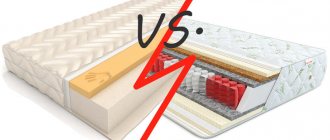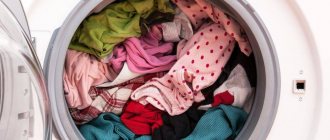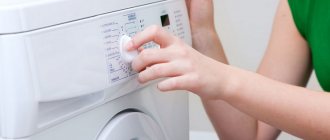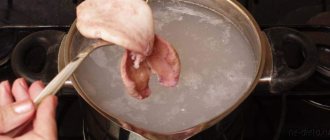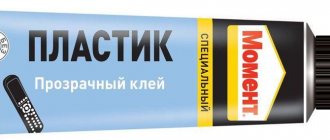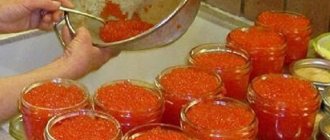Polyethylene is one of the most popular and widely known materials. Not too expensive and, in general, unpretentious. Polyethylene is quite often used in the construction of greenhouses and greenhouses, for insulation and moisture insulation of various objects. At the time of work, many craftsmen are faced with the need to glue this material. This is where the problems begin. The fact is that polyethylene is difficult to join. But you can still fasten it with glue. This can also be done under high temperature. How to choose a suitable adhesive for polyethylene and what should you pay attention to when carrying out work? Answers to these and other questions can be found below.
Properties of polyethylene
This wonderful material has many interesting properties. Polyethylene is used to protect against moisture, is an excellent electrical insulator and is capable of absorbing one of the most dangerous types of radiation. It is almost completely resistant to chemicals. It is this last quality that sometimes turns from an advantage into a disadvantage. How to fasten such material and how to choose glue for polyethylene?
Interestingly, gluing is not only a chemical, but to some extent an electrical process. The molecules of the substances being connected are attracted to each other due to the difference in their charges. Therefore, it is quite difficult to find a substance that adheres well to polyethylene, and after drying, firmly holds the fastened parts together. Since the molecules of this material are quite “balanced”, it can be very difficult to glue it with other elements. But still, the chemical industry has created an adhesive for gluing polyethylene. And not alone. Such an adhesive must have certain properties. Let's look at which ones exactly.
Requirements for adhesive material
If you decide to glue polyethylene or phenol foam (its foamed version) to a concrete or brick surface, then the fastening adhesive layer must have a number of properties:
- Remain resistant to weather conditions.
- Do not destroy the materials being fastened.
- Possess a high degree of hygroscopicity and adhesion.
- Be resistant to temperature changes.
- Have antiseptic and fungistatic qualities.
- Maintain its properties for a long time.
How to choose glue?
If you don't know which polyethylene adhesive is right for you, ask the seller to look for one that contains methyl acrylate. This substance ensures rapid softening of polyethylene and its high-quality gluing. The product may also contain chromic anhydride, various acids and xylene. The undeniable advantage of this glue is that when using it you do not need additional surface treatment. But users claim that it also has a drawback. This glue for polyethylene is very toxic. Therefore, it is better to carry out all work outdoors. Well, or you will have to at least ensure high-quality ventilation of the room. The glue “works best” at a temperature of +35˚C. It is not afraid of moisture, but it ignites easily.
You can also find products for joining polymers in stores. They are sold in the form of a thick paste. They usually come with a solvent included. After connecting these two components, the glue acquires the desired structure. Since the solvent evaporates instantly, the mixture must be used quickly. So you shouldn’t breed a lot at once.
Filled acrylate adhesive
If you don’t know how to glue foamed polyethylene, try using a two-component composition based on the same methyl acrylate. Alternatively, you can try Easy-Mix PE-PP from Weicon. It has excellent adhesive properties. Used for gluing polypropylene, polyvinyl chloride and other polymer materials. When working with this glue you will have to hurry. It retains its properties in the open air for no more than three minutes.
Easy-Mix PE-PP contains a special additive consisting of microscopic glass beads. This filler prevents the glue from leaving the bonding site. Therefore, the seam is quite strong. This adhesive for polyethylene foam should only be applied from a branded mixer. It is best to work with it at a temperature of +22 °C. Complete hardening is ensured no earlier than after 5–6 hours.
Classification of package welders
Manual bag sealer
This is an inexpensive and versatile device. It is used at home and in production, where there is no need to package large volumes of products, and also where speed is not important. Manual bag sealers can be floor-mounted or table-top.
Automatic sealer
They are used in large stores and supermarkets for high-speed packaging of goods, clothing, and food products. If a manual bag sealer requires control and constant presence of a person nearby, an automatic sealer works with one click of a button.
Advantages of automatic sealers:
- The heating elements are hidden inside the housing, so there is no risk of body parts or foreign objects getting in. The desired item in the package is brought to the sealer and inserted into the neck hole. After pressing the button, sealing occurs within 3 seconds.
- You do not need to align the film yourself so that it is packed evenly. The device is configured to do this automatically.
- Ready-made bags with a clip look neat and airtight.
Impulse bag sealers
Impulse sealer
This is a hand-held, lightweight and compact device with a plastic body. It is used for sealing polypropylene or polyethylene with a thickness of up to 150 microns and a width of up to 40 cm. The width of the finished sealed seam is 3 mm, and its length is 400 mm. The device is not equipped with an automatic film cutting system.
The principle of operation is pulsed heating of elements during soldering when the film comes into contact with the strip. The timer sets the sealing time (from 1 to 5 s), the melting temperature and its density. The product is laid out on the heating surface, the lid is closed, the power is turned on and the surface is heated. At the end of the process, the power is turned off.
Sealers with constant heating
The device is used for large volumes of products and high sealing speed. The package includes 2 sponges that press against the product and a thermal knife that separates the packages from each other. The sponges are heated to the required temperature using a heating element built into them.
Roller conveyor sealer
The equipment is used for sealing polyethylene with a density of up to 800 microns, of any length. The device works with different types of polymer materials, in two positions - vertical and horizontal. The products are placed on a conveyor belt, moving along it to the sealing, cooling and engraving departments. The device allows you to adjust the speed of movement along the conveyor, the temperature of the heating surface and the dating system.
Vacuum sealer
The device for gluing polyethylene film itself draws air from the packaging, creating a vacuum and tightness in it. To do this, click on the “Vacuum” button. The device is used for packaging food, preventing the spread of bacteria, so that food is preserved longer.
The packaging machine can be double-chambered, which allows the person working behind it to simultaneously stack and seal products in two compartments.
Mini sealer
Vacuum mini bag sealer
This plastic device weighs up to 100 g, is up to 10 cm long, and runs on two 3 W batteries. To seal, you need to place the package on the thermal contact, lower the lever and move it along the entire length of the package. When the lever touches the bag, the power will automatically turn on, the surface will heat up, and the layers will be soldered. The device will automatically insert the bag clips.
Ticks
Packs bags with a density of up to 200 microns. A manual clipper for bags allows you to clip goods while hanging. The device is mains powered and looks like a device with two handles that are connected to Teflon heating surfaces.
Epoxy adhesive
Of course, this is not a very suitable glue for gluing polyethylene. But if you can’t find anything else, then you can try. You just have to prepare the surfaces first:
- Clean the edges of the parts to be glued with fine sandpaper. Then degrease them thoroughly.
- Treat both parts with a 20% solution of chromic anhydride or a 25% solution of potassium dichromate. If such substances cannot be found, you can use a strong solution of potassium permanganate.
- After treatment, dry the surface.
- Dilute the glue according to the instructions. Apply a thin layer to the surfaces to be bonded. Immediately connect the details.
- Leave for several hours, or better yet a day, until the seam completely hardens.
User reviews indicate that phenol-formaldehyde resin has excellent adhesion to polyethylene. So if you follow the instructions carefully, you will succeed.
Gluing polyethylene: instructions
As you can see, to glue polyethylene, you don’t need any special knowledge. The order of work here is familiar:
- clear out;
- degrease;
- dry;
- spread with adhesive;
- fasten the parts;
- press;
- leave until completely dry.
In this case, as when working with any other toxic substances, you should ensure that you have safety glasses, gloves and a respirator.
Good afternoon I had plastic films glued to the doors behind the door trims. They have become unusable (all torn). I ordered new ones. But what glue to use to stick them to the doors is a big mystery. I’ve already tried a lot of things, but so far only the Moment universal second gel really holds up. The trouble is that the second one sticks tightly and when you try to peel it off, the film breaks, but in the original it held up very well, but even when peeling it off, the film did not tear. The remains of the old one are relatively soft and will roll into coils with your fingernail. Can you tell me what kind of glue this could be? Moreover, it is necessary that the glue is not aerosol, but must be applied manually. I will list what has already been tested and what does not hold at all: - Moment extra strong 88 - Moment gel transparent - Moment Crystal - Moment classic 1 - Special rubber moment - Glue 66 metal - Moment plastic transparent glue
Alternative Methods
Other methods can be used to connect parts. An iron is a suitable option for gluing plastic film together. Perform the following steps:
- The appropriate heating temperature is selected through testing.
- The film parts are placed on top of each other to prevent sticking to the sole of the iron; paper is used.
- They run the device over the paper.
To prevent the paper from sticking to the sole, simply moisten it with a damp cloth.
An iron is a suitable option for gluing plastic film together.
Soldering iron, it is more convenient to use a special nozzle. Or a rod of aluminum is used as a sting; the contact area is 2 millimeters. The process includes:
- Degreasing the item.
- Securing sheets.
- The device is passed along the joint part.
If you need to solder a large surface, then a metal plate should be used as a tip; aluminum and copper are suitable.
Soldering iron, it is more convenient to use a special nozzle.
Flame method. Matches, candle, burner are suitable. By placing the flame along the seam, gluing is performed. Stages of work:
- Degreasing.
- The material is secured with bars.
- The place where the product will be welded is released to the edge by 4-5 millimeters.
- They walk through this part with flame.
- A seam is obtained in the form of a roller.
By placing the flame along the seam, gluing is performed.
Polyethylene adhesive is a reliable method of fastening polyethylene parts. The material itself has special properties that do not allow it to be bonded with conventional adhesive solutions; gluing it is a complex process, so the choice should be made in favor of high-quality products. It is easy to glue various objects with special solutions, but it is important to remember safety precautions when working with toxic substances; a person must protect himself by wearing protective clothing and gloves.
Technical characteristics of polyethylene
Polyethylene film is used as insulation, packaging material, and electrical insulator. It can reliably protect against moisture and absorbs neutrons, which are a type of radioactive radiation. Foamed polyethylene, otherwise called isolon or polyfol, is used to insulate a home - it is used to cover walls.
The question of how to glue polyethylene arises quite often. The usual composition is not suitable for these purposes, since the material is chemically inert. A special glue for polyethylene is required.
Polyethylene bonding is an electrical and chemical based process. The adhesive composition should adhere well to the surface of the film, and after hardening, reliably adhere the surfaces to each other.
There are two ways to firmly glue polyethylene:
- High temperature welding (iron).
- Use of adhesives.
How to properly glue plastic film at home
In construction, polyethylene film is mostly used as a waterproofing agent or heat insulator when it comes to film greenhouses. Polyethylene has certain soundproofing properties, but not sufficient to use it as an independent sound insulator.
To glue polyethylene, you must first purchase the kind of glue that is used for gluing plastic.
Is it possible to glue polyethylene?
When constructing waterproofing or a greenhouse, it is often necessary to glue together several pieces of polyethylene to obtain a film of the desired size. But how to glue plastic film, and is it possible to do it at home?
The question is not as simple as it initially seems. It is also known from a school chemistry course: the higher the polarity of a polymer material, the better it is amenable to gluing. The polyethylene molecule written in chemical symbols is very similar to a long chain consisting of identical units – CH2-. This uniformity indicates that the electrical charges inside the polyethylene molecule are distributed evenly, i.e. it is non-polar. Therefore, polyethylene sticks very poorly.
Welding a polymer film: a – using an electric soldering iron, b – using an attachment for an electric iron, c – with an open flame.
Very often, adhesive mixtures are used for gluing polymer materials, which are prepared from the same materials (or similar ones) dissolved in a suitable solvent. But this will not work with polyethylene - it is practically insoluble in organic solvents.
Some polymers can be glued simply because they have a rough surface. In this case, the adhesive solution fills the irregularities and, when hardened, clings to them, tightly gluing the pieces of material together. But this cannot be done with polyethylene, since it has a perfectly smooth surface.
Therefore, if we talk specifically about the gluing process, then gluing plastic film at home is almost impossible. And in industrial applications it has never been glued together until now.
But although pieces of polyethylene cannot be glued together, they can be welded, or, more precisely, soldered, which has been successfully done for many years in the industry, having developed many methods for such welding . But out of this many methods, there are only two that can be used at home.
Welding polyethylene with a hot object
Welding the film using an electric soldering iron: a - type of seam, b - device of the electric soldering iron for welding the film.
It is most convenient to do this operation using a metal roller with a heating device inside. But to make such a device at home, you need to have a fairly highly qualified electrician.
Therefore, people's ingenuity found a completely satisfactory replacement for such a tool - an ordinary iron. Since different brands of polyethylene film melt at different temperatures, no specific recommendations on the welding temperature regime can be given.
The heating temperature of the iron for welding will have to be determined through trial and error. If the temperature of the iron turns out to be insufficient, the film will not cook, but if the iron is heated too much, the seam will be “overcooked”, weak, and the film on the sides of the seam will tear easily. The only thing that can be recommended initially is that the iron should not be too hot.
The soldering technology itself is very simple. To make the seam neat and even, it is better to solder on a flat wooden surface. The edges of the film should be placed on this surface with a slight overlap on each other (0.5-1 cm). You need to run the tip or edge of a heated iron along this overlap. The passage should be no more than a second in one place, otherwise you will burn the film.
PVC film can be recognized by the yellowish tint of the edge of the roll.
But with this method of soldering there is one very important negative point: the heated plastic film very often sticks to the iron. To prevent this from happening, it is better to cover the polyethylene seam with a thin sheet of cellophane before soldering, and then run an iron over it.
The strength of the solder can be checked by simply pulling the soldered pieces in different directions. If the seam diverges, it means the quality of the soldering is unsatisfactory, and you need to repeat everything from the very beginning. Some craftsmen perform this soldering not with an iron, but with a hot knife blade, claiming that it is more convenient for them. But this is a matter of taste.
Open flame welding of polyethylene
To verify polyethylene using this method you will need:
- metal or ceramic bars,
- welding tool (this can be a gas torch, a blowtorch, an alcohol lamp, and in the absence of these, you can use a splinter or even ordinary matches).
Electrical circuit diagram for connecting the “iron” to the network: 1 – constant wire-wound resistor, 2 – metal body, 3 – tip-edge, 4 – textolite handle, 5 – stand.
The edges of the films to be welded must be fixed with metal or ceramic bars (wooden ones are not suitable for these purposes). They need to be fixed in such a way that at the welding site a narrow strip of film (3-5 mm, no more) is visible from under them. The bars are needed not only for fixing the film, but mainly in order to quickly remove heat from the films being welded, otherwise they will burn out entirely instead of fusing.
Next you need to run the flame along the remaining open edge. The speed of flame movement will also have to be selected experimentally, especially since it will be different not only for each brand of polyethylene, but also for each tool. If the operation is performed correctly, then upon completion a dense roller will be formed, firmly connecting the two edges of the plastic film.
As an alternative to welding, when constructing greenhouses and greenhouses, two pieces of plastic film can be sewn together. To do this, two pieces of film are overlapped on top of each other. The overlap should be 2-2.5 cm. Then a regular medical plaster is glued to the overlap on both sides. It won’t stick well, but that’s not a big deal, the main thing is that the strips of adhesive lie exactly where they overlap, one above the other.
Then, overlapping, two seams are made with large stitches. In this case, pieces of film are held together using stitched threads, and the patch, having a stronger material structure, prevents the threads from tearing the polyethylene. However, this method is not suitable for waterproofing, since the seams will allow moisture to pass through.
It should be noted that both welding methods are only suitable if you need to connect polyethylene to polyethylene.
If there is a need to glue the film to some other material, then you will have to look for a transparent film made of another material, which adheres better, and for which there are special adhesives on sale. Alternatively, it could be polyvinyl chloride film.
It’s up to you to connect plastic film using the methods described or look for something new. The main thing is not to be afraid to experiment, because if something cannot be done today, this does not mean at all that it cannot be done tomorrow or the day after tomorrow.
Types of glue and their manufacturers
The vast majority of adhesive compositions practically do not stick to polyethylene, simply being squeezed out from the area where the surfaces come into contact. But there are still materials that can cope with such a difficult task.
The most popular types of glue that can be used for polyethylene are:
- BF-2, BF-4;
- two-component acrylate;
- epoxy.
Butyraphenol glue (abbreviated as BF) is produced in Russia, manufactured by Petrokhim CJSC in St. Petersburg. The glue is a viscous, thick liquid of brown or reddish-brown color and does not rot or corrode.
BF-2 is suitable for gluing metal, plastic, ceramics and wood, and is used for restoration work. Glue cannot be used for dishes, as it contains toxic aldehydes and phenol. BF-2 is universal, chemically inert and moisture resistant.
BF-4 is practically no different from BF-2 in terms of chemical resistance, but its scope of application is slightly different. BF-4 is usually used for gluing elastic materials that are subject to vibration and bending. For example, leather, wood, plexiglass, textolite, metals and alloys.
Two-component acrylate adhesive V-Strong GELIAHAO 302 is characterized by increased strength, it is transparent and does not harden very quickly (in 4 minutes), which allows you not to rush too much when working. Excellent bonding of metal and plexiglass.
Transparent epoxy adhesive “Contact” ROSEL , St. Petersburg, based on polyepoxy resin and hardener. Used for repairing products made of fiberglass, porcelain, wood, earthenware, glass, metal and various alloys. The composition perfectly fills cracks, voids and gaps, restores the shape and volume of objects. The seam is characterized by resistance to gasoline, oil, and water.
Which is better
Among all the compounds that can glue polyethylene film, the leading position is occupied by Weicon Easy-Mix PE-PP , designed specifically for materials with weak adhesion. This is an acrylate glue with filler. It contains very small glass beads that do not allow the composition to slip out of the gluing area; they form a gap of optimal thickness.
the KLEYBERG 152-1 line is perfect for foamed polyethylene due to its unique composition and wide range of uses.
Hot Welding Instructions ↑
This method can be called the simplest, most effective and safe at the same time, especially when it comes to welding at home. An ordinary iron can be found in every home, and seams created using heated objects are usually the smoothest and neatest.
Universal roller for gluing polyethylene ↑
The most convenient tool for this method can be a roller with a built-in electric heating device. This tool is ideal in cases where a large amount of work needs to be done - for example, in large agro-industrial enterprises. As a rule, such devices have to be made independently. And for them to work well, you must at least have a qualification as an electrician.
However, when it comes to how to glue plastic film for a greenhouse at home, the roller method is not very suitable. After all, not everyone has the time, patience and necessary skills to create such a device, especially when the need for welding rarely arises. Then you should resort to the help of improvised means. And in everyday life there are a lot of devices that can be heated to the required temperature – approximately 250°C.
Application
Before using Weicon Easy-Mix PE-PP, thoroughly degrease and dry the surfaces. You can apply glue only from the mixer that is included in the package. The maximum mechanical strength of a polyethylene seam occurs after 4 or 5 hours. The optimal air temperature for work is from +21 to +23˚ C.
Advice: In its liquid state, the adhesive's shelf life is no longer than three minutes, so join the surfaces immediately after applying the composition.
Epoxy adhesive is not intended for gluing polyethylene surfaces, but the phenol-formaldehyde resin included in its composition has excellent adhesion to such material.
Application of epoxy glue:
- Rub the areas to be glued with sandpaper, degrease and dry.
- Treat the surfaces with chromic anhydride (concentration solution 15-20%) or potassium dichromate (20-30%). You need to work with them with extreme caution, as these substances are very caustic and are dangerous carcinogens.
- After treatment, dry the surfaces.
- Prepare epoxy glue according to the instructions on the package.
- Apply a thin layer of adhesive to both surfaces and immediately join them.
- Leave for several hours, or better yet, a whole day at a temperature of +30 to +45˚ C, so that the seam completely hardens.
Tip Chromic anhydride and potassium bichromate can be replaced with a strong solution of potassium permanganate, which is also a strong oxidizing agent. It is no less effective, but at the same time safer, although it can also leave a chemical burn.
How to glue plastic film for a greenhouse yourself
Welding of film panels can be done in two ways.
Film gluing method 1
Place one sheet of film on top of another, cover them with newspaper or fluoroplastic film on top, then slowly run the edge of an iron, a soldering iron tip or a roller over the junction of the panels, after preheating it to 250 °C.
Film gluing method 2
You can connect the edges of the panels as follows: clamp them between 2 smooth strips of metal so that the edges of the film protrude about 1 cm from under them, and melt them with the flame of an alcohol lamp or blowtorch.
To glue the film, you can also use xylene and trichlorethylene, heated to 70 - 75 ° C. At a temperature of 30 °C, film panels can be glued with 80% acetic acid. If you choose one of the above substances to connect the film parts, use extreme caution when working with them.
The film can be glued using BF-2 or BF-4 adhesives, having previously treated the surfaces to be joined with a 25% solution of chromic anhydride. PK-5 glue is best suited for joining panels of polyamide film. Be sure to iron the seam obtained after gluing with a warm iron heated to a temperature of 50 - 60 °C.
More recently, superglue has appeared on sale, which is designed specifically for plastic film. It gives a very strong, water-resistant and elastic connection. In addition, it is absolutely odorless, and the connections are transparent and practically invisible. With one bottle of glue with a capacity of 50 ml, you can glue a seam 15 - 20 m long.
Since superglue contains solvents used in everyday life, it is recommended to follow the same precautions when working with it as when using household chemicals. If stored in sealed packaging, the shelf life of the glue is unlimited. If it dries out, it is enough to dilute it with acetone to restore its original properties.
Superglue is also useful for repairing finished film coatings. The method of its application in this case is as follows. Using a brush or stick, apply a thin layer of glue around the damaged area from the outside of the film covering. Let it dry for 2 hours. Then cut out a patch of the required size from the film, apply it to the damaged area and smooth it well. You can even glue old film with superglue. However, you should know that it is best to repair film coatings in sunny weather.
If you want to sew film panels with threads, overlap them on top of each other. Place stitches infrequently. To increase the strength of the seam, use a paper gasket. This method of joining film sheets is most often used when it is necessary to apply a patch to the film covering before it is stretched onto the frame or when an already stretched film breaks. Minor damage to the film can be sealed with adhesive tape.
Useful tips
Recommendations from specialists will help to glue polyethylene together efficiently, firmly and reliably, so that the products will serve for a long time:
- If very high demands are placed on the strength of the seam being formed, then the optimal method for gluing polyethylene is welding. The seam will be strong if it is not allowed to cool suddenly.
- Before using filled acrylate adhesive, no mechanical preparation of the surface is required. With the exception of degreasing and cleaning, which are carried out before gluing any surfaces.
- The seam formed after gluing the film with acrylate glue should be kept at a temperature from +15 to +70˚ C for 4-5 hours.
- Epoxy glue is difficult to work with, and the bond strength is not very good.
Tip You can create your own recipe for polyethylene glue by adding a little crushed chalk or cement to the acrylate glue. The composition can be of high quality and at the same time inexpensive.
The best option for gluing polyethylene is welding, since the result is a strong, reliable seam. It is not always advisable to use adhesive compositions, this is explained by the fact that polyethylene is a chemically inert material with weak adhesive properties.
Precautionary measures
The eyes are a very vulnerable organ. The procedure for gluing eyelashes should be carried out as carefully as possible so as not to cause mechanical damage to the eyelids and eyeball. The choice of adhesive must be approached with all responsibility.
Just because glue perfectly holds paper, rubber or other materials together does not mean that it is also suitable for eyelashes. Some formulations may cause allergies, lacrimation, and swelling. If the adhesive mass gets into your eyes, you should immediately rinse them with running water and apply Normax drops.
Gluing false eyelashes (video):
How to glue false eyelashes? The easiest way (video):
How to glue false eyelashes and bunches (video):
Well, all the secrets of gluing false eyelashes have been revealed. If your own experience is not enough, and there is no special glue at hand, it is better to contact a salon. A festive evening with luxurious eyelashes is not worth eye health and good vision. Natural beauty is valued much more highly.
Liked? Share with your friends!

